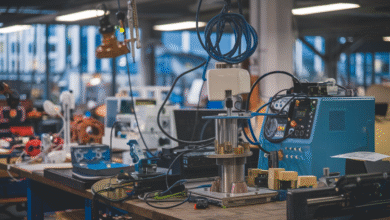Understanding The Tech Hacks Pblinuxgaming

The phrase “tech hacks pblinuxgaming” brings together two closely related ideas innovative technical tweaks and the community driven Linux gaming ecosystem that continues to evolve at a rapid pace. Linux has long been favored by enthusiasts who appreciate open-source freedom, and as gaming on Linux has gained traction, the demand for clever optimizations—often described as “hacks”—has grown. These hacks are not necessarily malicious tricks; rather, they are creative methods to squeeze more performance, stability, or usability from Linux systems dedicated to gaming.
PBLinuxGaming, as a concept or community, reflects the movement of gamers who prioritize flexibility over closed systems. By leveraging Linux distributions optimized for performance and reliability, these gamers push the boundaries of what open-source platforms can achieve in delivering high-quality, modern gaming experiences. The idea of “tech hacks” plays perfectly into this environment because it is about customizing systems, reducing bloat, and optimizing hardware to handle demanding titles and engines.
The Rise of Linux Gaming and Why Hacks Matter
Linux gaming used to be an underdog story. Years ago, native support for major titles was rare, GPU drivers were limited, and configuring software was an uphill battle. Over time, thanks to projects like Proton, Wine, Vulkan, and an enthusiastic developer Tech Hacks Pblinuxgaming on Linux has transitioned from niche curiosity to viable mainstream alternative. However, this progress did not happen without dedicated users experimenting and sharing methods to solve problems that traditional operating systems solved with proprietary tools.
Tech hacks within this space have helped bridge gaps. Whether improving GPU compatibility, fine-tuning frame rates, or addressing input lag, these hacks emerged from gamers who preferred direct control over their system. In environments like PBLinuxGaming, these customizations are not just temporary solutions—they are part of the ethos. People willingly trade a small amount of convenience for transparency and performance, making it possible to build systems that are faster, leaner, and tailored precisely to one’s gaming style.
What Defines a Tech Hack in PBLinuxGaming
In the context of Linux gaming, a “tech hack” can be understood as any modification, optimization, or workaround that pushes a system beyond default settings. Unlike official patches released by developers, these hacks are often community-created, shared through forums or discussion boards, and refined over time through collaborative effort.
Such hacks might involve adjusting kernel parameters to improve hardware scheduling, modifying libraries for smoother frame pacing, or using scripts to manage system resources during gameplay. They might also include adjustments to controllers, display scaling, or even creative use of virtual machines and containerized applications. For PBLinuxGaming enthusiasts, this willingness to dive under the hood is part of the fun—an opportunity to learn, troubleshoot, and celebrate victories when a stubborn title finally runs at its full potential.
Hardware Optimization for Better Gaming Performance
PBLinuxGaming enthusiasts often start their journey with hardware tweaks because performance optimization at this level has an immediate and noticeable effect. Advanced users learn to undervolt GPUs to reduce thermal throttling, manually adjust CPU governors to prioritize performance during gaming, and even experiment with RAM overclocking where supported. These technical adjustments require knowledge and care, but the results can dramatically enhance a gaming session without replacing expensive components.
Linux’s open nature makes these hacks accessible. Tools integrated into various distributions provide visibility into system usage, temperatures, and bottlenecks, giving gamers the information they need to act intelligently. Unlike closed platforms, where firmware restrictions may prevent experimentation, Linux welcomes this type of user-driven performance tuning.
Software Tweaks to Enhance Game Compatibility
One of the challenges of Linux gaming has alwaysbeen software compatibility. Not every game is built with Linux in mind, which means users often rely on translation layers such as Wine or Proton. In this context, “tech hacks” might involve manually configuring Wine prefixes, customizing environment variables, or applying game-specific patches shared by other community members.
By doing so, users improve compatibility for games that are otherwise unstable or unplayable out of the box. Adjustments to runtime libraries, shader caching mechanisms, and video driver settings allow games to run as if they were designed natively for Linux. This is not only a triumph for PBLinuxGaming as a community but also a testament to the collaborative nature of open-source development.
Gaming-Specific Linux Distributions and Custom Builds
The concept of PBLinuxGaming often overlaps with specialized Linux distributions created for gamers. These distributions might come preloaded with performance enhancements, GPU drivers, and game managers such as Lutris or Steam preconfigured. However, users frequently apply further hacks to these systems, building entirely personalized setups that reflect their hardware and gaming preferences.
Custom kernels are another area where advanced tech hacks thrive. By compiling kernels with gaming-specific patches, users achieve lower latency and better responsiveness. These kernels might incorporate features such as BFQ schedulers or optimizations for real-time audio and graphics processing. Such efforts show how deep the PBLinuxGaming community’s commitment runs—people are willing to modify the foundation of their operating system to gain a competitive edge or simply a smoother gameplay experience.
The Role of Open-Source Tools in Tech Hacks
Open-source tools are the backbone of Linux gaming and the heart of its tech hack culture. Whether it’s performance monitoring utilities, graphics configuration panels, or automated scripts, these tools allow users to see exactly what’s happening in their system and respond accordingly.
For example, frame-rate limiters, shader compilers, and diagnostic overlays provide data on how efficiently a game runs. Gamers can then make targeted changes, such as disabling unnecessary background services or reallocating resources to ensure the GPU runs at peak capacity. In many cases, the tools themselves are developed by members of the community, further highlighting the collaborative and transparent nature of PBLinuxGaming.
Security and Stability Considerations
While tech hacks are often exciting, they must be approached responsibly. Making kernel-level changes or modifying driver behavior can lead to system instability if done carelessly. The PBLinuxGaming community generally emphasizes learning and understanding before applying changes blindly. A hack that improves frame rates for one user could lead to crashes or hardware stress for another if not adjusted properly.
Security is also a factor. Because many of these optimizations involve installing third-party scripts or patches, users need to verify the source and integrity of what they are applying. A culture of documentation and shared knowledge helps mitigate risks, as experienced users often guide newcomers through safe methods of experimentation.
Community Collaboration and Shared Knowledge
At the core of “tech hacks pblinuxgaming” lies a vibrant network of individuals who share their discoveries openly. Unlike closed ecosystems where optimization tips may remain hidden behind company walls, Linux communities document nearly every solution in forums, wikis, and tutorials.
This collaboration leads to faster progress. When one gamer solves an issue—whether it’s fixing controller input, eliminating screen tearing, or configuring a stubborn online title—the solution becomes accessible to others almost immediately. Over time, this knowledge accumulates into a collective resource that makes Linux gaming more accessible to everyone.
The Future of PBLinuxGaming and Continued Innovation
As gaming technology evolves, so will the nature of these hacks. With the rise of cloud gaming, hybrid systems, and powerful open-source APIs like Vulkan, Linux gaming is likely to become even more flexible. However, flexibility will always invite customization, and customization inevitably invites hacking—in the positive sense of the word.
Future innovations may include AI-assisted performance tuning, automated system optimization scripts, and even kernel modules designed specifically to anticipate gaming workloads. PBLinuxGaming will continue to attract enthusiasts who enjoy both gaming and system engineering, ensuring that the culture of hacks remains strong.
Practical Impact on Everyday Gamers
For the everyday Linux gamer, tech hacks represent empowerment. They turn what could be a rigid system into a highly adaptable platform. A player using these methods can run games at higher settings, achieve smoother frame rates, and enjoy a system free from unnecessary clutter. This level of control appeals not only to hobbyists but also to professional gamers who require consistent performance for competitive environments.
Even those new to Linux gaming benefit indirectly. Thanks to the groundwork laid by advanced users who develop and share their hacks, modern Linux distributions often come with preconfigured optimizations, reducing the learning curve for newcomers while preserving the option for deeper customization.
Why PBLinuxGaming Reflects the Spirit of Open Source
The philosophy behind PBLinuxGaming goes beyond just playing games. It embodies the open-source spirit: transparency, collaboration, and user empowerment. Tech hacks in this space are a natural extension of these values because they represent users actively shaping their environment rather than accepting it as-is.
Instead of relying on companies to decide how a system should behave, gamers in this community choose their own path. They test, break, fix, and refine Tech Hacks Pblinuxgaming their machines until they work exactly as intended. This self-directed approach is what makes Linux gaming culture unique and resilient, even as the broader gaming industry often leans toward closed systems and locked-down platforms.
Conclusion The Meaning of Tech Hacks PBLinuxGaming
“Tech hacks pblinuxgaming” is more than a phrase; it’s a snapshot of a culture where creativity meets technology. It reflects how gamers using Linux continuously adapt, refine, and improve their systems to meet modern demands. These hacks range from low-level kernel tweaks to high-level software optimizations, but they all share the same goal: better performance, improved compatibility, and a personalized gaming experience.



